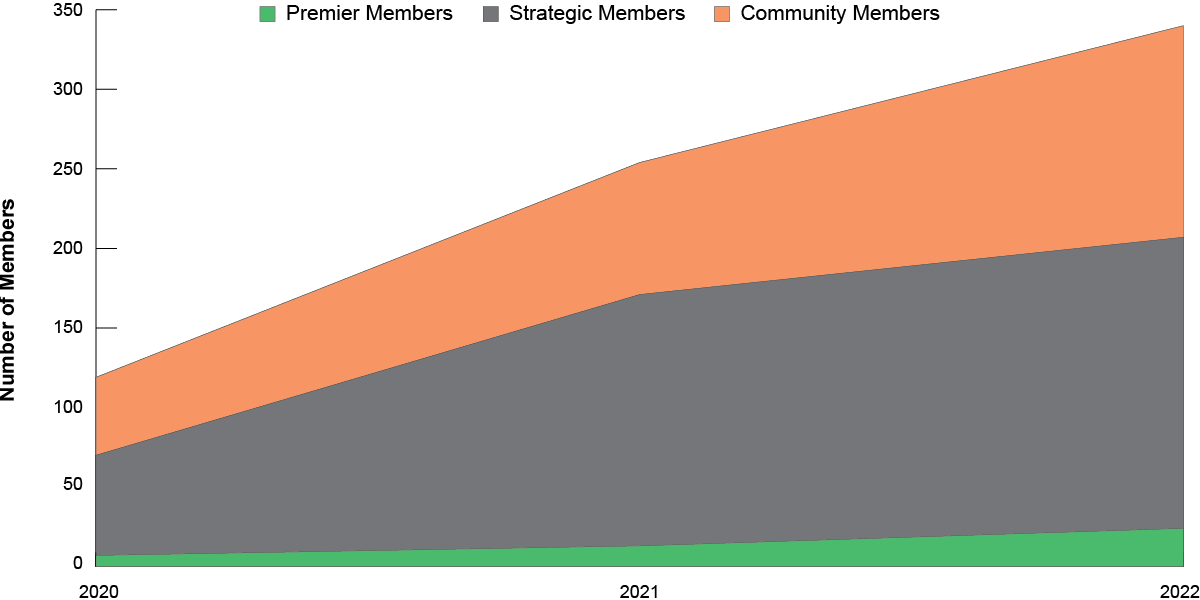IoT & Embedded Technology Blog
RISC-V’s Rapid Ascent in Embedded Systems
by Carter Ramsey & Dan Mandell | 3/28/2023
Originally developed as a research project at UC Berkeley in 2010, the RISC-V ISA has since sparked a considerable amount of interest and use in captive and merchant/commercial processing applications. In 2015, the non-profit RISC-V Foundation was created to establish an open-source development network for this new ISA. Developers across the world expressed their interests in the RISC-V platform, which eventually sparked the incorporation of the RISC-V Foundation in Switzerland in March 2020, which is now called RISC-V International today. This international expansion has led to significant growth in RISC-V members and ecosystem support through the past several years. RISC-V is primed to carve out its niche within the embedded processor space and OEM designs.
RISC-V Member Growth

At its core, the RISC-V architecture’s growth is due to the ISA’s opensource based cores, which allow companies to customize processors to their specific application. RISC-V also comes with no associated licensing cost, making the overhead of developing new products significantly lower than traditional licensed alternatives. However, the community aspect is the main driver behind the development of RISC-V applications and products, promoting innovation and collaborative development.
In 2022, one of the market leaders in RISC-V processors, SiFive, released a new product line tailored to automotive applications such as ADAS, connectivity, electrification, and infotainment. The automotive industry is one of the sectors we expect to see significant RISC-V adoption. As vehicles become more digitally complex, auto manufacturers need semiconductor chips that can handle the demands of their new technologies. After the debilitating supply chain shortage of chips caused in part by the COVID-19 pandemic, auto manufacturers realized they need to figure out how to consolidate their computer-based systems in hopes of reducing the amount of chips used per vehicle.
RISC-V is also seeing growth in other verticals. Recently, Renesas, one of the largest embedded processor providers in the world, partnered with Andes Technology to develop the Renesas’ R9A02G020 MCU ASSP, which is an AMC (advanced motor controller) processing IP based on RISC-V. This new IP is suitable for almost all motor control applications and acts as a turnkey solution to the more piecemeal offerings currently out in the market. The target markets for this product are home/building automation, healthcare devices, home appliances, drones and many others..
The embedded AI field is another area where RISC-V is gaining prominence. In 2022, another industry leader in the RISC-V ecosystem, Cadence, announced that it is expanding its Tensilica DSP IP to support the coupling of RISC-V processors. Its current Tensilica IP is suitable for AI applications and has been gaining traction within the RISC-V community. Additionally, Arteris, a software company, has partnered with SiFive to provide a system IP that expedites System-on-Chip design for edge AI systems.
With industry leaders such as Renesas, SiFive, Cadence, and Arteris continuing to innovate with RISC-V and provide new embedded development and engineering solutions, we can expect to see steady further growth in RISC-V memberships and broader market adoption. These companies are driving the development of new technologies and pushing the boundaries of what is possible with embedded RISC-V alongside a rapidly growing ecosystem of other organizations big and small.
VDC Research will be publishing a report in Q2 2023 that will provide more details about RISC-V and its impact on IoT and embedded technology markets. Stay tuned for more information on this exciting topic.